Have you noticed that you’re struggling to finish shots in balance? Is your entire body facing the target when you’re done swinging a driver? Does playing out of the rough cause you to “bail out” through the impact zone? If you’ve noticed that your lower body is really active in the downswing, even spinning out the way golf instructor David Leadbetter is demonstrating (above), the issue might not be resolved with a golf lesson.
Mike Hansen, one of Golf Digest’s Best Fitness Trainers in America, says physical limitations are often the culprit. “I see a lot of my older clients improve their balance on the course by working on their mobility,” says Hansen, who trains golfers at his gym, Hansen Fitness for Golf, in Irvine, Calif. “Why? Many of them can’t rotate through to a full finish and can’t move their lower bodies due to mobility issues, so when they try to swing a little faster or turn more, they lose their balance. If they want to make solid contact, their swing continues to get shorter over time from losing balance or fear of falling over.”Hansen says a quick circuit of mobility work will give aging golfers or anyone who feels “stiff” a lot more range of motion in their swings. Psychologically speaking, freeing up the body will allow you to make a more free-flowing swing and not feel like you have to “go after it” to hit it as far as your accustomed, Hansen says. “Improving mobility in the hips, thoracic spine and shoulders along with a few stability drills would be the prescription,” he says. “With many of my clients, it’s not forgetting how to move but more of an issue of trying to make the same swing with a tighter body. “If you don’t use it, you lose it. The more diligent you are in the gym, the longer in life you can play at your current level. I see a lot of golfers retire thinking they’re going to play more golf, but when they add more golf days, the body breaks down due to lack of preparedness.”To improve your mobility or prevent balance issues from impacting your swings down the road, try this workout from Hansen.
“Combine flexibility and stability exercises that work your joints through motions that replicate the golf swing while maintaining balance,” he says.
MORE: Rules of Golf Review: The difference between taking a stance and building a stance
Split-stance rotations: Turning the thoracic spine against a stable lower body 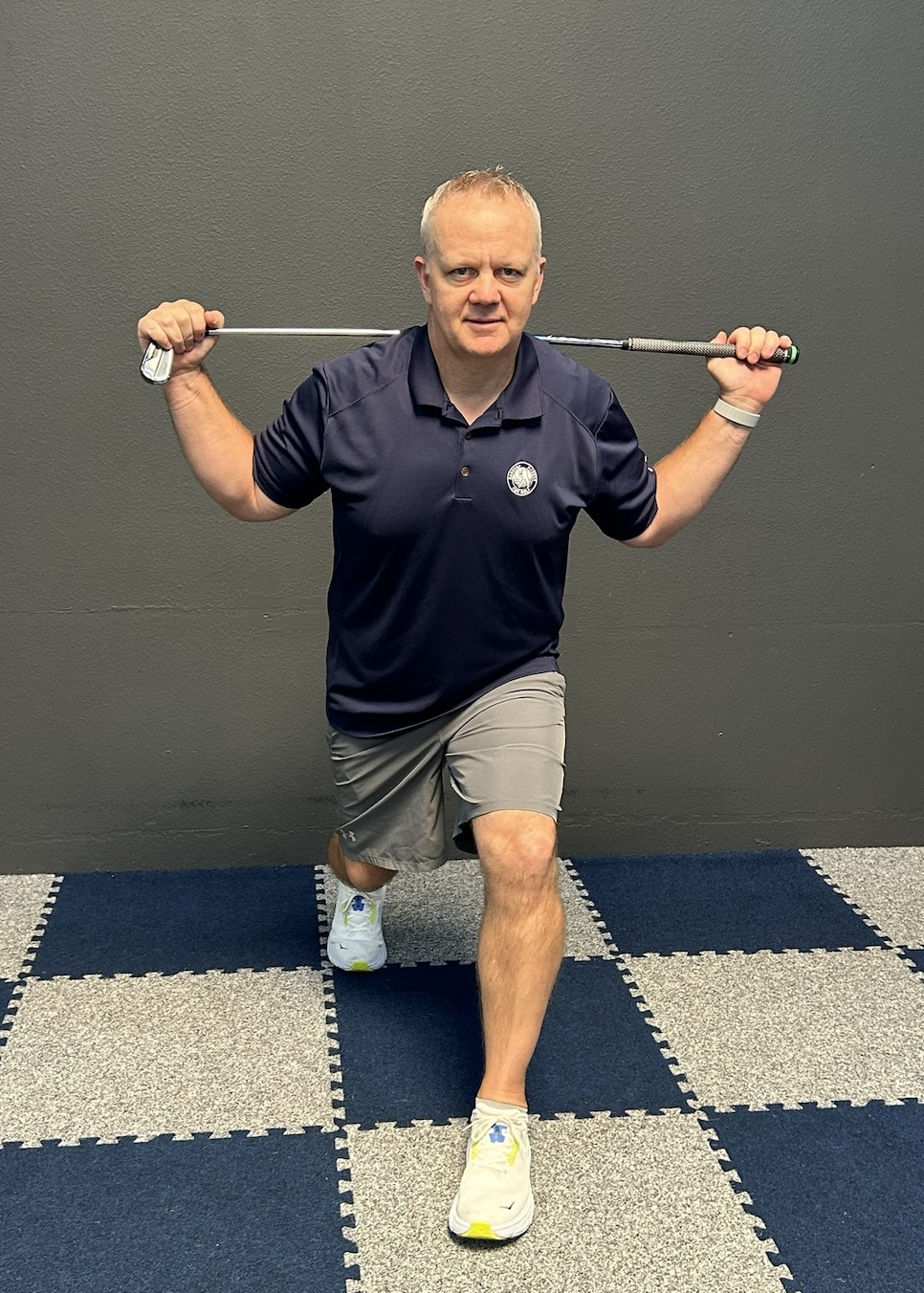
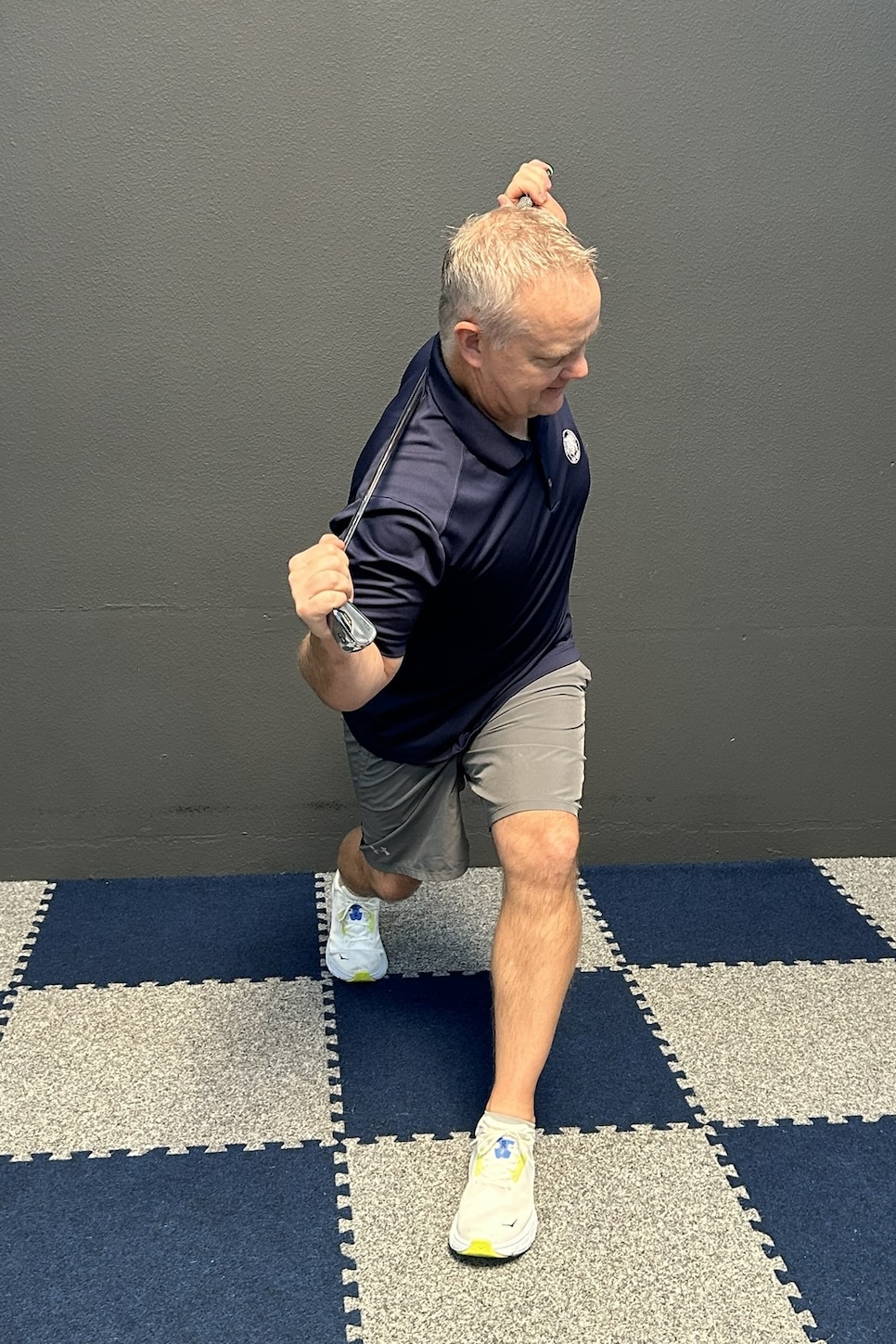
- Starting Position: Stand with one foot forward and the other back, maintaining a slight bend in the knees. Your feet should be shoulder-width apart.
- Rotate: Holding a golf club behind your neck, rotate your torso toward the front leg while keeping your hips facing forward. Be sure to keep the forward knee as stable as possible.
- Stability: Rotate your shoulders as far as you safely can while maintaining your balance. Work up to better rotation. (10-15 turns over the front leg, then switch legs.)
Stork turns: Moving the hips through internal rotation while maintaining balance 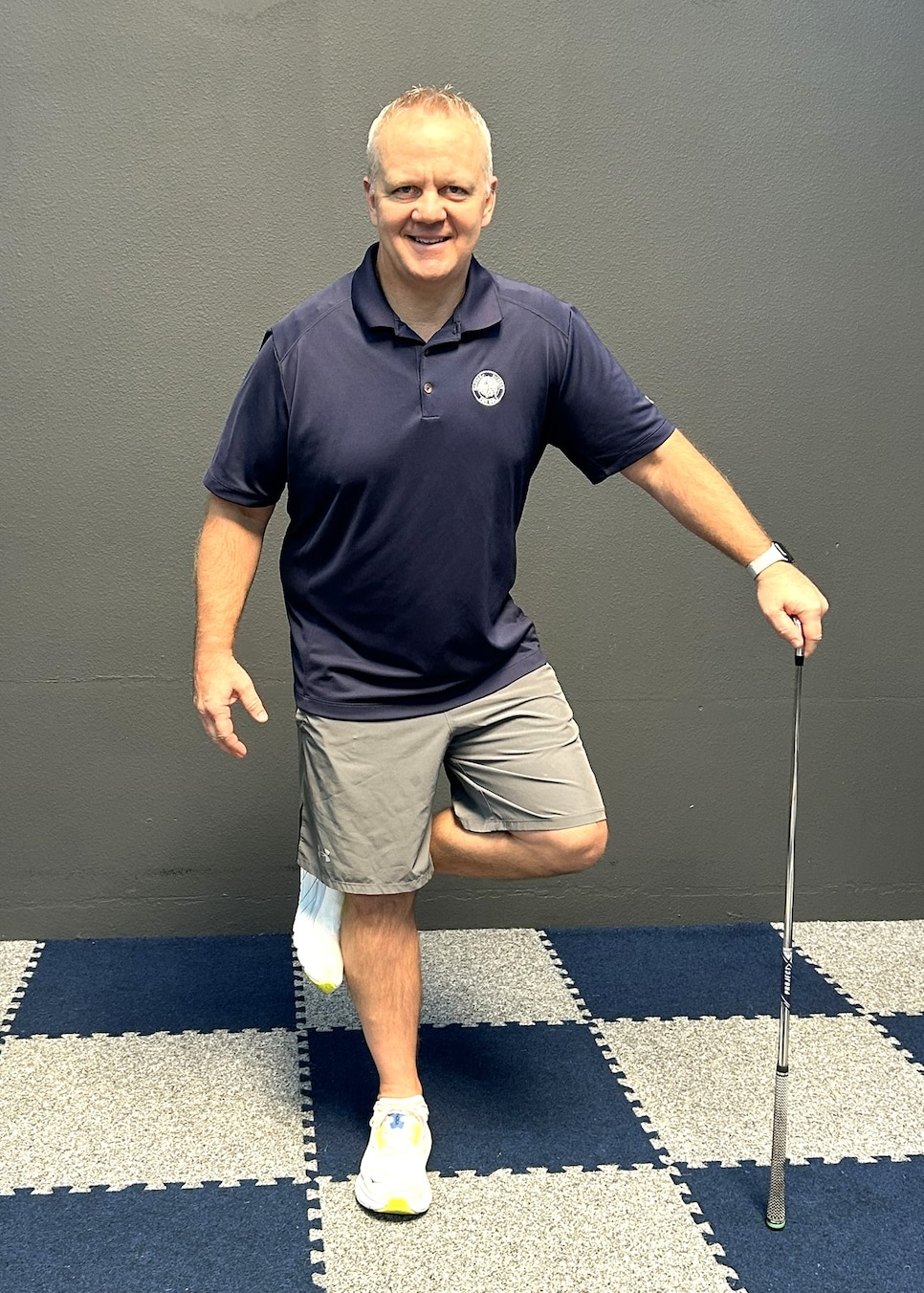
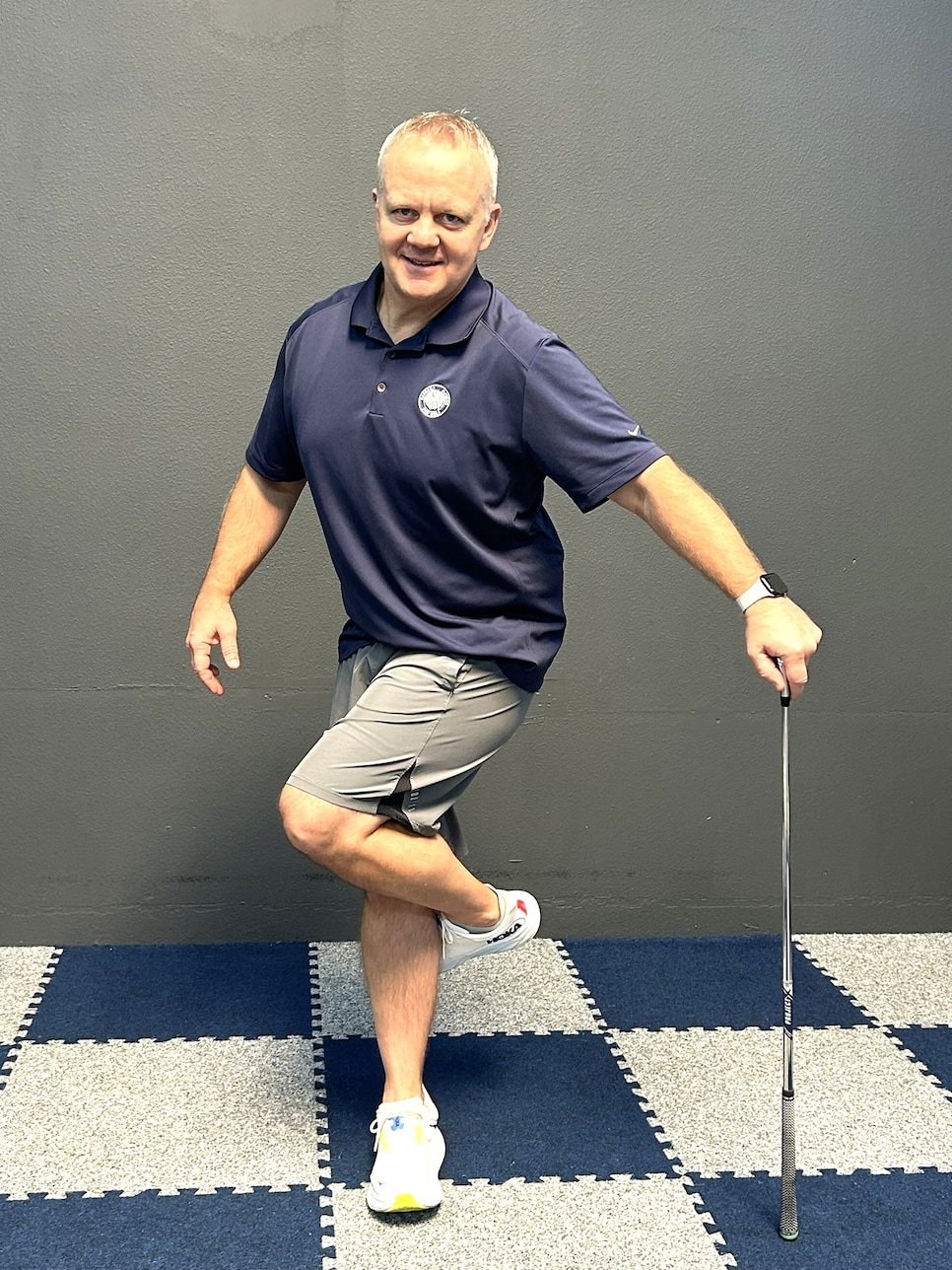
- Starting Position: Stand on your left leg while holding a stick or golf club in your right hand. Place your right foot behind your left knee.
- Rotation: With a slight bend in your left knee, rotate your right knee as far as you safely can around your left leg.
- Progression: Start slow and under control. As you start to feel more comfortable, increase your speed. You may also work up to doing it without a stick or club for support. (Perform 10-15 turns on each leg.)
External shoulder squeezes with arm raises: Isometric stretching for the external rotation of the shoulder joint 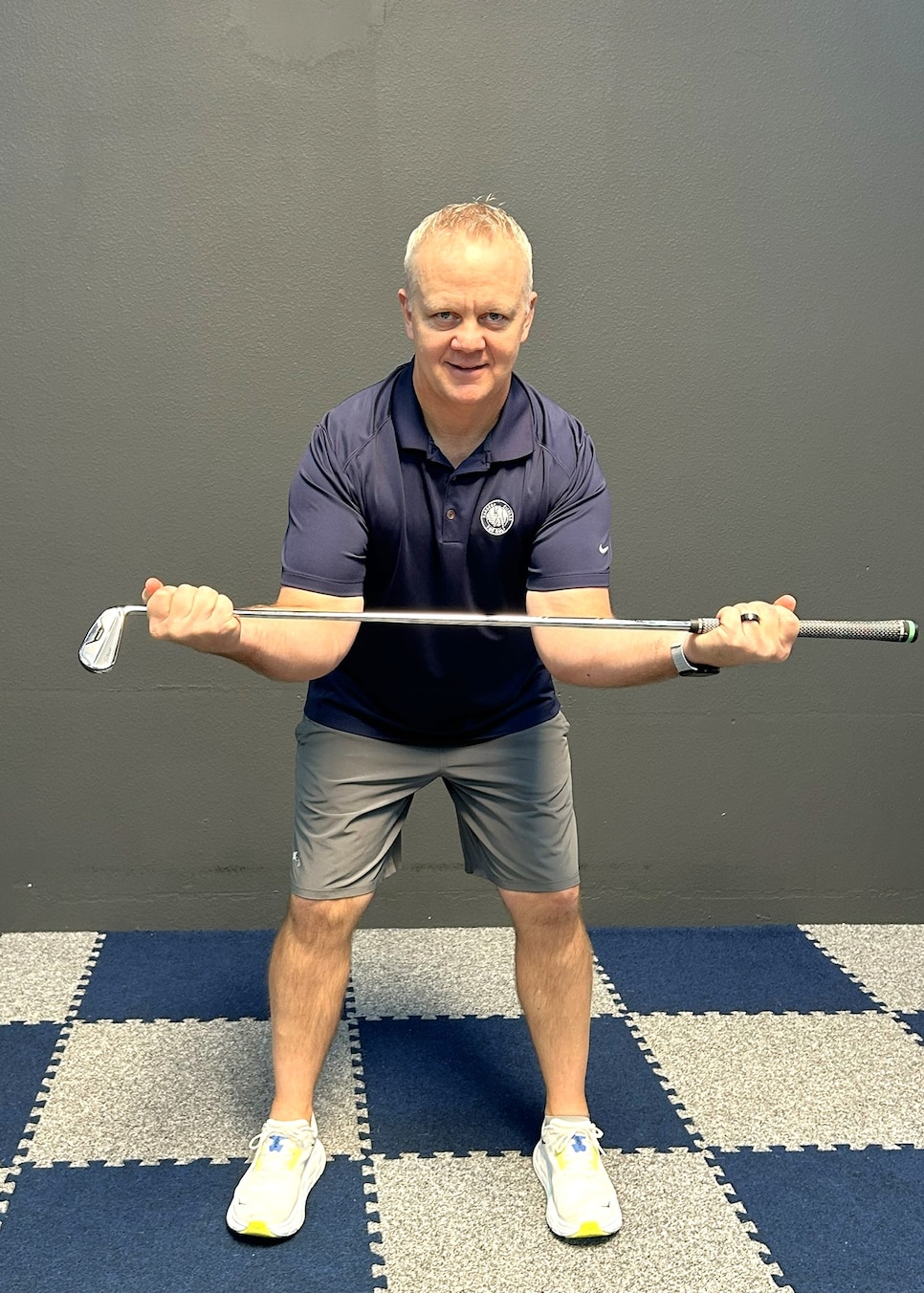
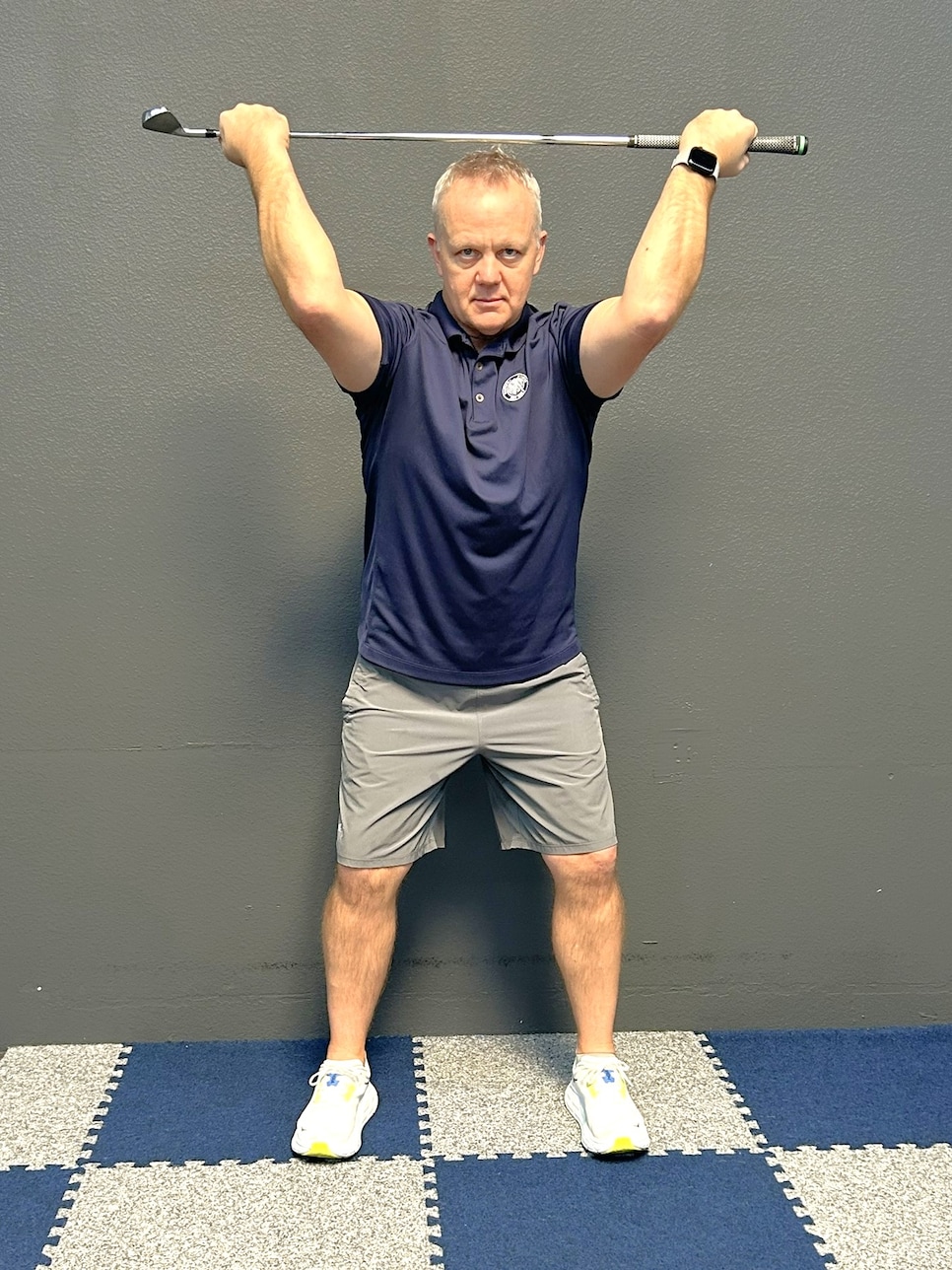
- Starting Position: Grab your longest iron, hold each end of the shaft with your palms up. Get into driver posture with the club out in front of you.
- Stretch: Keeping your arms in front of your body, gently push your elbows together and slowly raise your arms up, ultimately over your head.
- Range of Motion: Go as far as you comfortably can and hold 5 seconds. (Repeat 5-10 times.)
Overhead lat stretches: Extending the arms overhead to stretch the shoulders and upper back 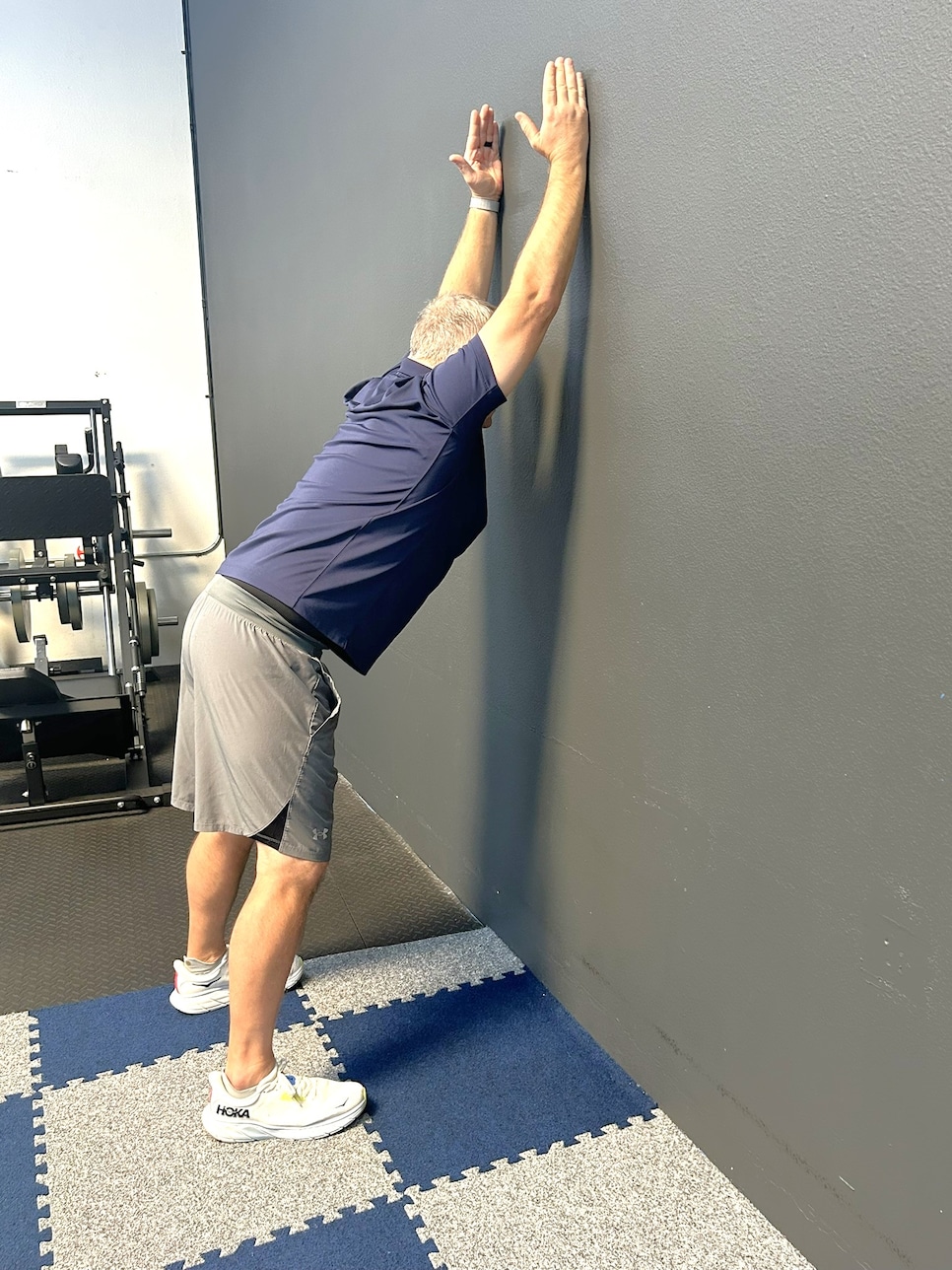
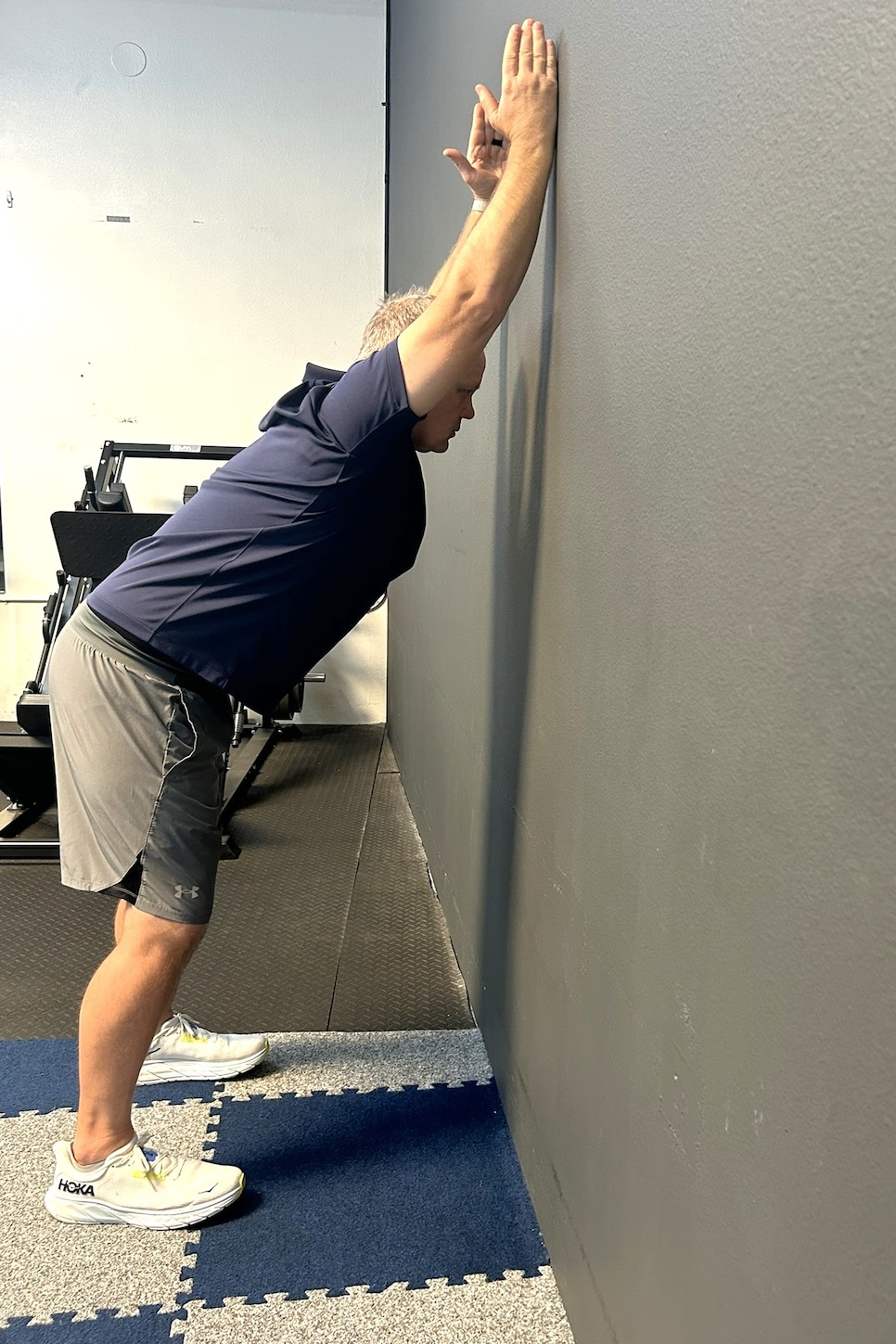
- Starting Position: Stand 12-24 inches away from a wall with a slight bend in your knees.
- Stretch: Place your arms as high up the wall as possible, keeping them shoulder-width apart with your pinky finger on the wall. Drop your head and chest toward the wall and take two deep breaths.
- Hold: Hold this position pushing your hands as high as possible.(Take 2-3 deep breaths and repeat 5-10 times.)
This article was originally published on golfdigest.com

